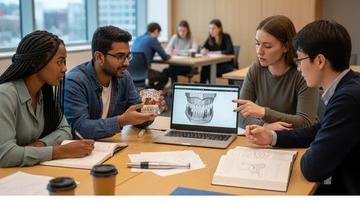
Academy of Dental Knowledge
Structured and ethical coaching for ADC Part 1 and ADC Part 2 examinations.
About ADK
Academy of Dental Knowledge prepares overseas-trained dentists for the Australian Dental Council examinations through structured courses, scenario-based mock tests, OSCE simulation, technical skill training, and personalised mentoring by ADC-qualified faculty.
“Learn systematically. Practice wisely. Clear confidently.”

ADC Part 1 Courses

Crash Course (6 Weeks)
- Access: 4–6 weeks or until next ADC exam
- 4 weekly FULL mock tests (2 days × 2 papers × 120 min)
- 14 vignettes per mock × 5 SBA questions
- Free eBook: Australian Ethics & Jurisprudence
- Quick revision notes + video tutorials
- Daily topic-wise practice tests
- One feedback session with Dr. Ajai M. Singh
- Condensed fast-revision notes
- Mobile + Desktop access
- Immediate access after payment
Fee: INR 29,999
Join Now
Comprehensive Course (16 Weeks)
- Access: 16–20 weeks or until next exam
- 16 FULL mock tests (2 days × 2 papers × 120 min)
- 14 vignettes × 5 SBA (ADC blueprint aligned)
- Free eBook: Australian Ethics & Jurisprudence
- Weekly LIVE lectures + recorded sessions
- 4–5 monthly counselling sessions
- Mini mocks + full notes
- Condensed revision summaries
- Mobile + Desktop access
- Immediate access after payment
Fee: INR 74,999
Join NowADC Part 2 Courses

OSCE Course
- Communication, clinical reasoning, viva preparations
- Exam-style OSCE stations
- Timed sessions + examiner feedback
- Recordings + review materials
Fee: INR 74,999
Join Now
Technical Training
- Hands-on prosthodontic & restorative practice
- Step-by-step demonstrations
- Examiner-style scoring
Fee: INR 74,999
Join NowWhy Choose ADK
Best ADC-Qualified Teachers
Learn directly from successful ADC dentists.
Proven Success Record
Consistent pass rate among international candidates.
Updated Material
Blueprint-aligned and exam-focused.
Trusted Reputation
An academy respected across multiple countries.
Flexible Schedule
Study at your convenience.
Interactive Learning
Case discussions and scenario-based learning.
Personalised Mentoring
One-to-one guidance and performance tracking.
Collaborative Study Groups
Learn with peers worldwide through structured teamwork.
Post-Exam Guidance
Career and settlement support after ADC success.

Meet Your Mentor
Dr. Ajai Mohan Singh
ADC-qualified Prosthodontist with extensive clinical and academic experience, helping overseas dentists achieve ADC success through structured planning and personalised feedback.
“Empowering overseas dentists with clarity and confidence.”
What Our Students Say
– Dr. Ayesha Khan (India)
– Dr. Nuwan Perera (Sri Lanka)
– Dr. Samuel Okoro (Nigeria)
– Dr. Rajat Kumar (India)
– Dr. Thao Nguyen (Vietnam)
– Dr. Mahendra Joshi (India)
Join the Right ADC Course for Your Success
Select your program and start your preparation with structured lessons, mock exams, and mentoring from an ADC-qualified prosthodontist.
Contact
Email: support@dentalknowledge.in
WhatsApp: +91 9263633090
Facebook: facebook.com/dentalknowledge
YouTube: YouTube Channel
Categories
- ADC Exams (5 Courses)




